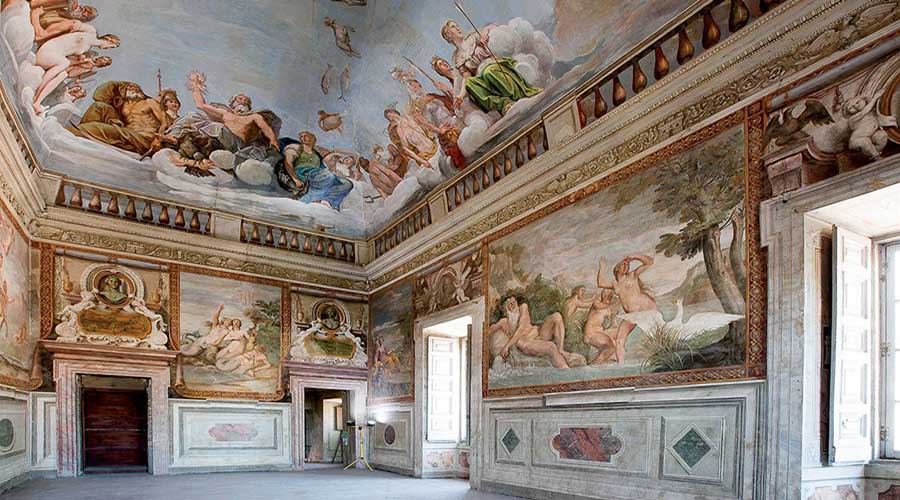This post is also available in: Italiano (Italian) Deutsch (German) Español (Spanish)
The main entrance is in the square where the parish church also stands and consists of a massive wooden door, flanked by four peperino busts that support as many marble heads, dating back to Roman times (2nd century AD).
The walls of the courtyard inside were frescoed by fantastic scenes of triumphs, made by Antonio Tempesta.
The patrimony contained in this palace, consisting of pieces of arms, busts, statues, furnishings and all kinds of objects belonging to a building inhabited for a long time, was transferred and concentrated in the Odescalchi Palace, in nearby Bracciano, by the same family Odescalchi. Noteworthy is a small theater, located on the ground floor and designed in the English manner: Vincenzo Giustiniani had in fact been the summer residence of Henry VII of England.
Inside you can see wooden boxes, first covered with drapes and useful for hosting the noble public, and a large audience which is accessed through the courtyard, reserved for all the people.
